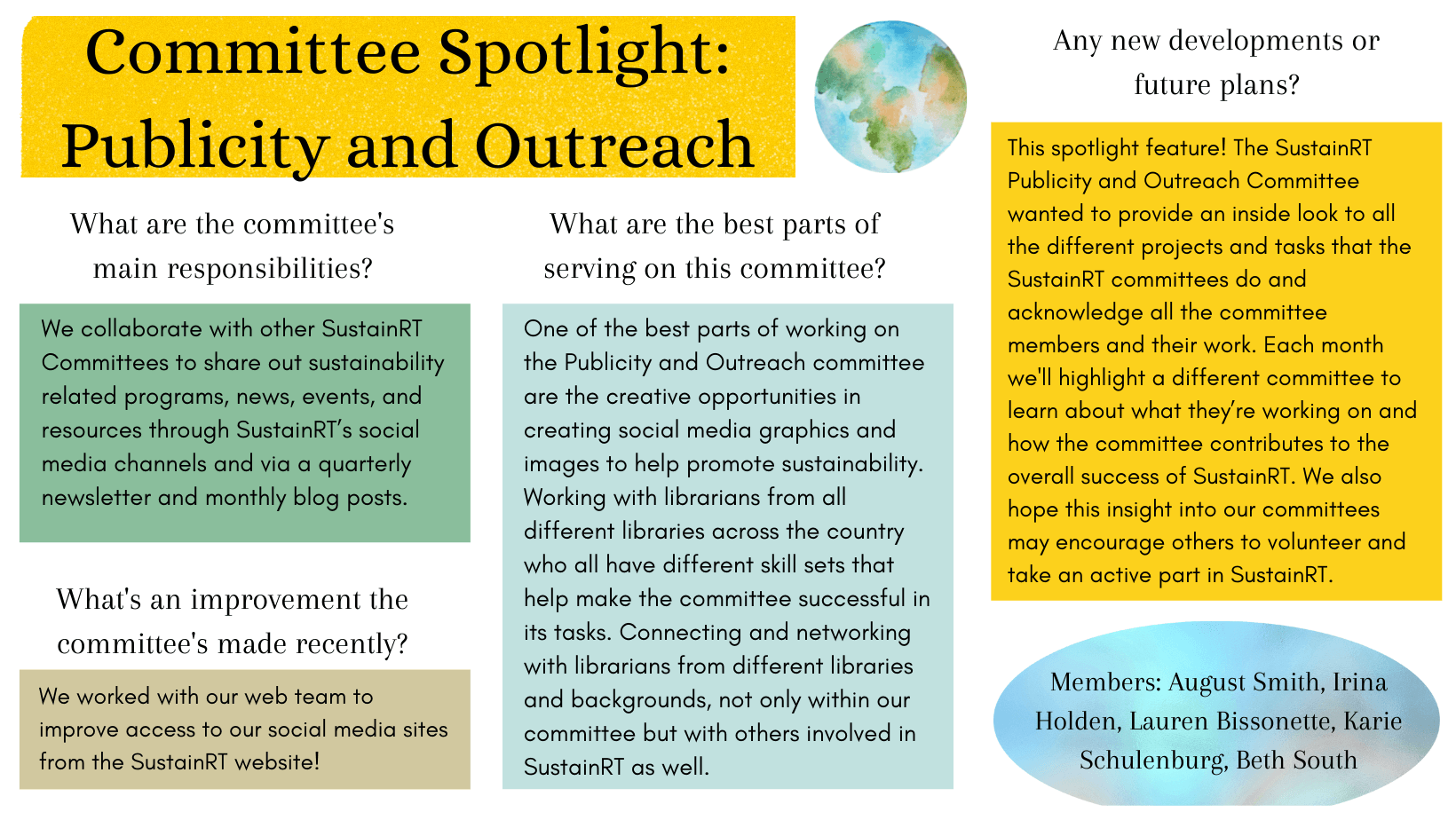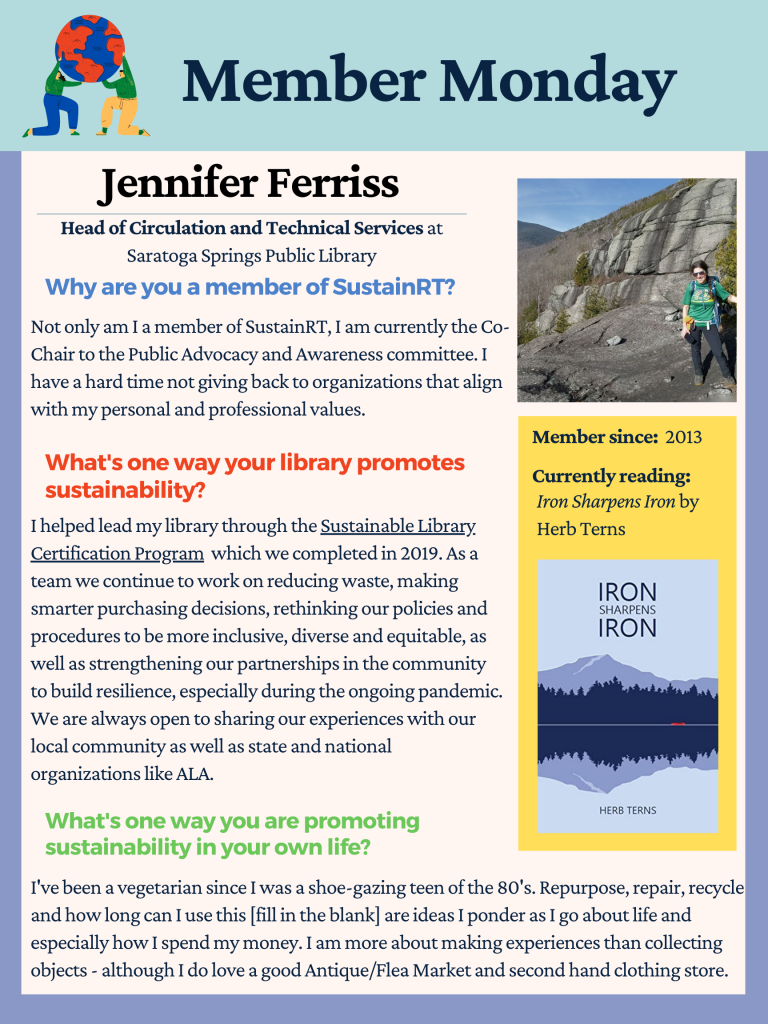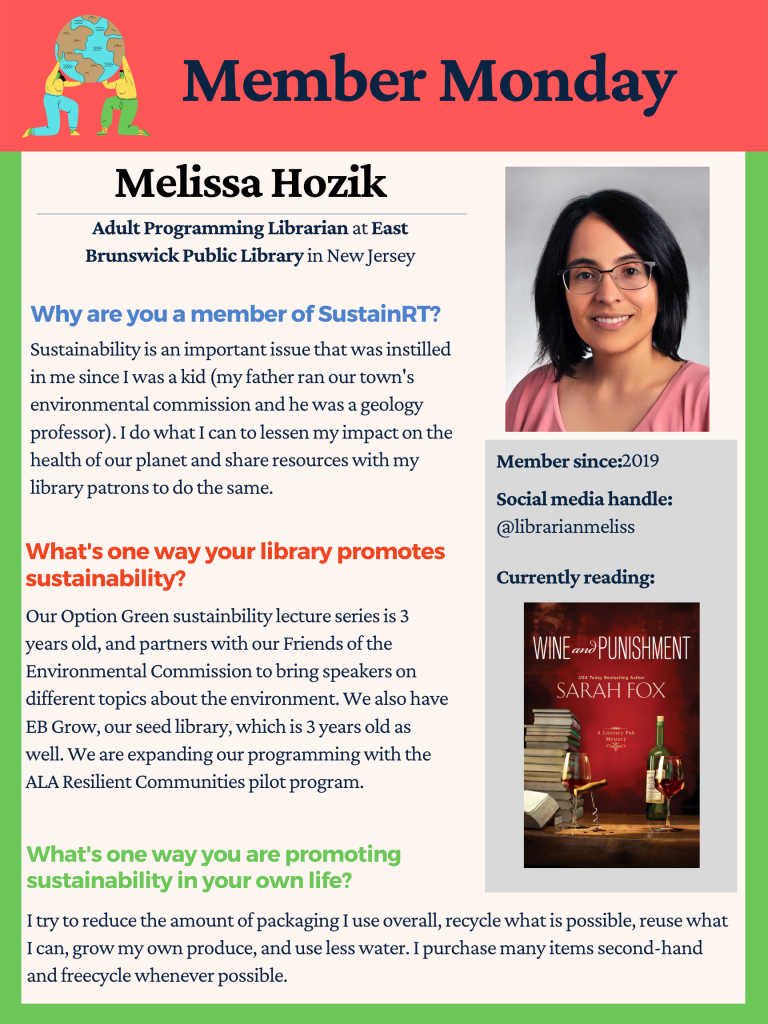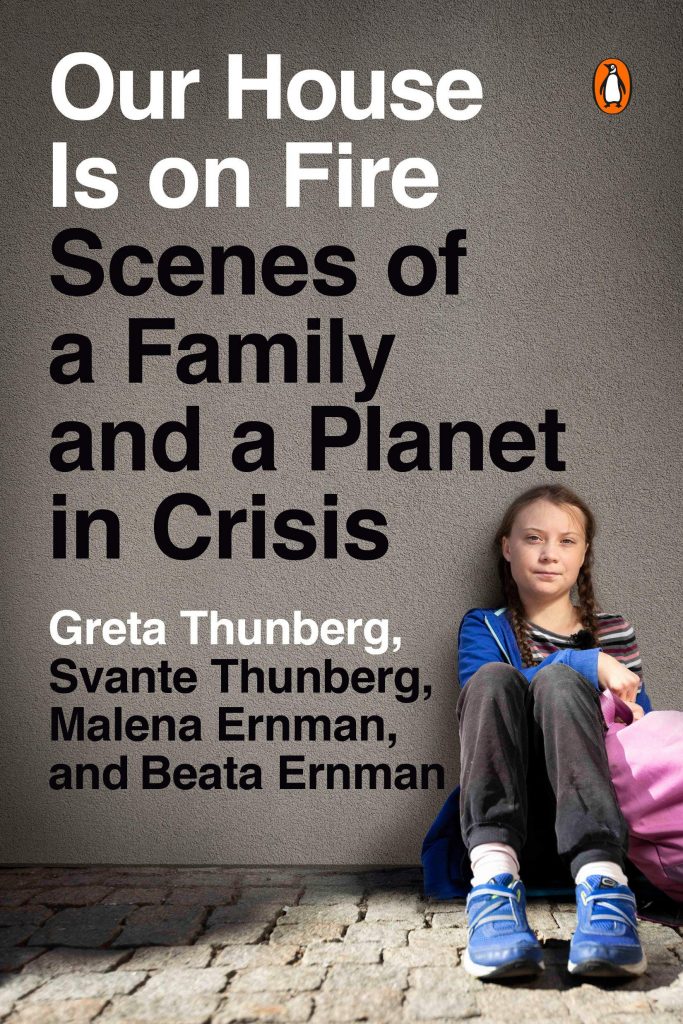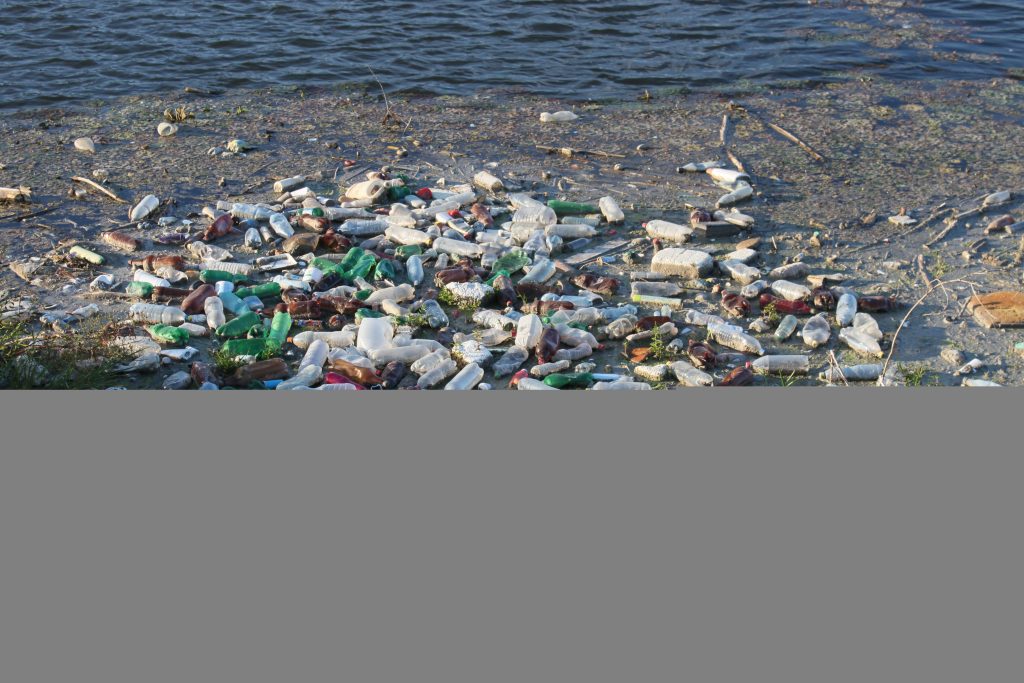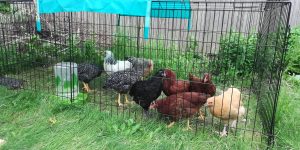SustainRT is seeking nominees to stand for Spring 2023 election for the roles of Coordinator-Elect and Member-at-Large (see position descriptions below). If you see a sustainable future with libraries leading the way, a leadership position in SustainRT offers a remarkable way for you to realize that vision. As one of the fastest growing roundtables in ALA, SustainRT is currently working on multiple initiatives as part of a strategic plan that challenges and supports ALA, our profession, our own libraries, and ourselves to live and work in more sustainable ways. Can you picture yourself helping to shepherd this work along? Nominees must complete and submit a nomination form by December 15th, 2022. Contact Past-Coordinator Lisa Kropp for the nomination form link, details, and any questions: lkropp@lindenhurstlibrary.org
Coordinator-Elect: The Coordinator-elect will be elected for a three-year term and serves one year of that term as Coordinator-elect, one year as Coordinator, and one year as Immediate Past Coordinator. The Coordinator-elect shall appoint the chair of each standing committee and members to fill vacancies in such committees for terms beginning their year as Coordinator, except the Nominating Committee.
The Coordinator-elect is expected to attend the ALA Annual Conference, and LibLearnX if a membership meeting is planned for the roundtable. The following year, as Coordinator, duties will include leading and convening monthly Steering Committee meetings and working towards completing goals identified in the SustainRT strategic plan. The Past-coordinator, will be expected to convene the nominating committee to find candidates for upcoming leadership positions, and maintain and update procedure documentation relevant to SustainRT’s work. Member-at-Large: The Member-at-Large position is a two-year commitment, including attending monthly SustainRT Steering Committee Meetings. The Member-at-Large will serve as liaison between the Steering Committee and a SustainRT committee, and work on special projects as assigned by the Steering Committee or the Coordinator. Members at Large are expected to attend either the LibLearnX conference or the ALA Annual Conference.
